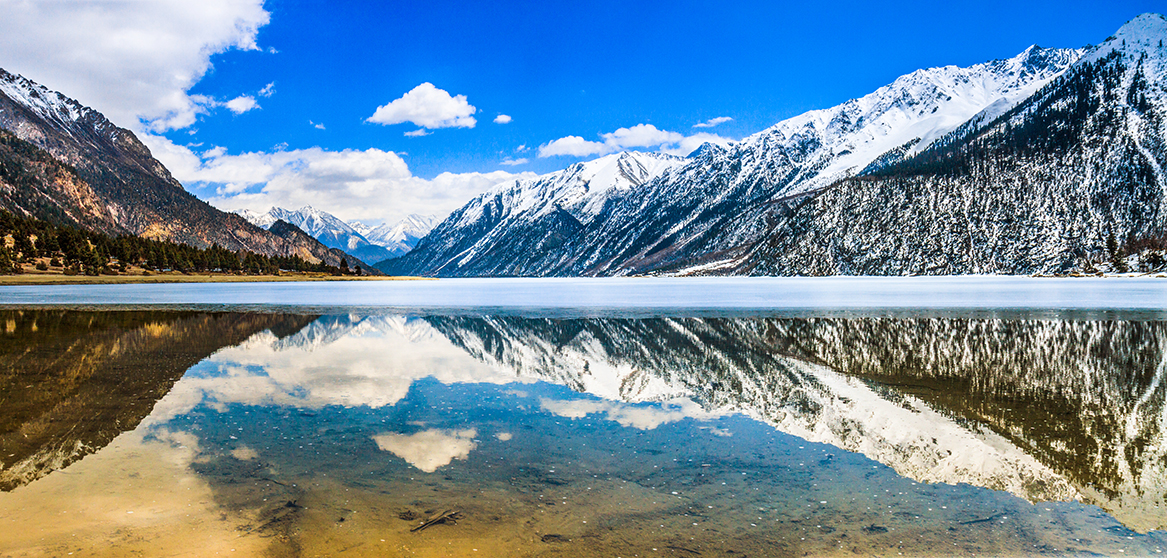Tibet’s Top 20
Mt Kailash, Ngari
Worshipped by more than a billion Buddhists and Hindus, Asia’s most sacred mountain rises from the Barkha plain like a giant four-sided 6714m chörten (Buddhist stupa). Throw in the stunning nearby Lake Manasarovar and a basin that forms the source of four of Asia’s greatest rivers, and who’s to say this place really isn’t the centre of the world? Travel here to one of the world’s most beautiful and remote corners brings an added bonus: the three-day pilgrim path around the mountain erases the sins of a lifetime.
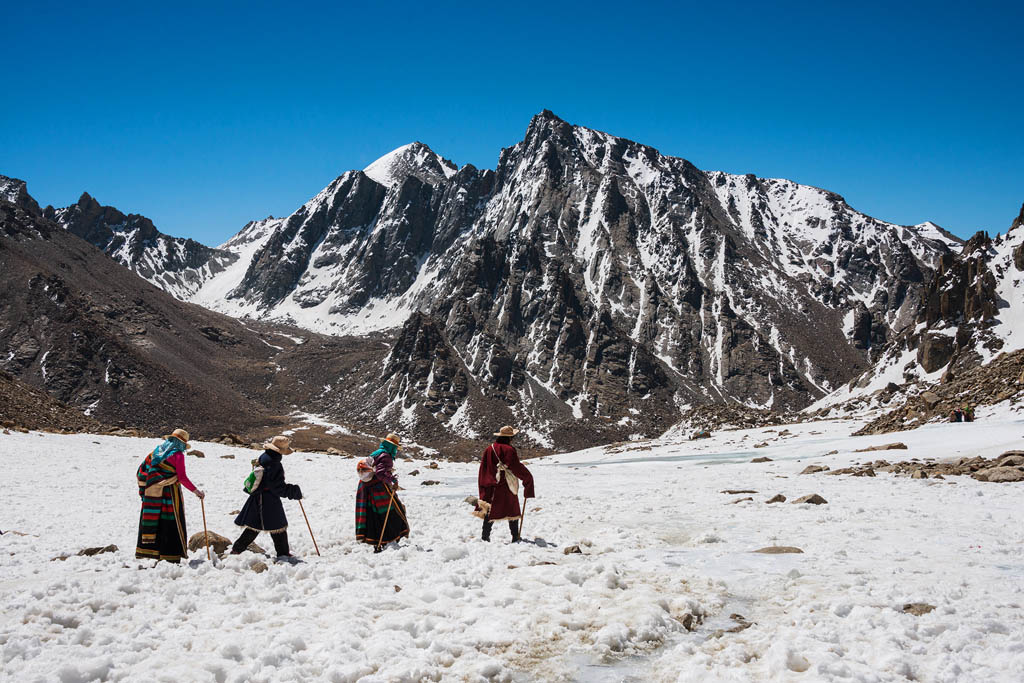
Top Experiences
Barkhor Circuit, Lhasa
You never know quite what you’re going to find when you join the centrifugal tide of Tibetans circling the Jokhang Temple on the Barkhor Circuit. Pilgrims and prostrators from across Tibet, stalls selling prayer wheels and turquoise, Muslim traders, Khampa nomads in shaggy cloaks, women from Amdo sporting 108 braids, thangka (religious painting) artists and Chinese military patrols are all par for the course. It’s a fascinating microcosm of Tibet and a place you’ll come back to again and again.

Top Experiences
Potala Palace, Lhasa
There are moments in travel that will long stay with you, and your first view of Lhasa’s iconic Potala Palace is one such moment. A visit to the former home of the Dalai Lamas is a spiralling descent past gold-tombed chapels, opulent reception rooms and huge prayer halls into the bowels of a medieval castle. It’s nothing less than the concentrated spiritual and material wealth of a nation. Finish by joining the pilgrims on a walking kora (pilgrim circuit) of the entire grounds.
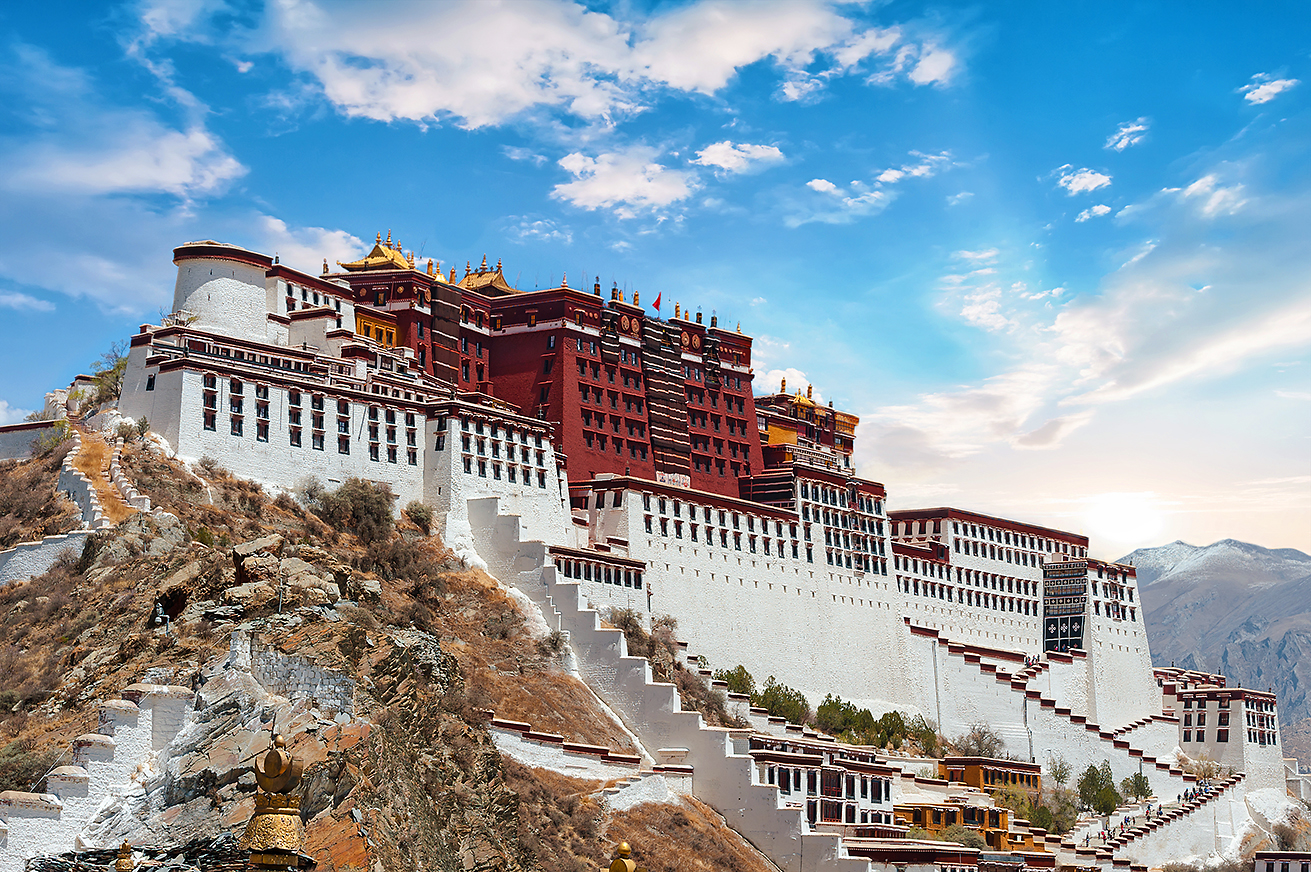
Top Experiences
Jokhang Temple, Lhasa
The atmosphere of hushed awe is what hits you first as you inch through the dark, medieval passageways of the Jokhang, Lhasa’s most sacred temple. Queues of wide-eyed pilgrims shuffle up and down the stairways, past medieval doorways and millennium-old murals, pausing briefly to stare in awe at golden buddhas or to top up the hundreds of butter lamps that flicker in the gloom. It’s the beating spiritual heart of Tibet, despite some damage caused by a fire in 2018. Welcome to the 14th century.
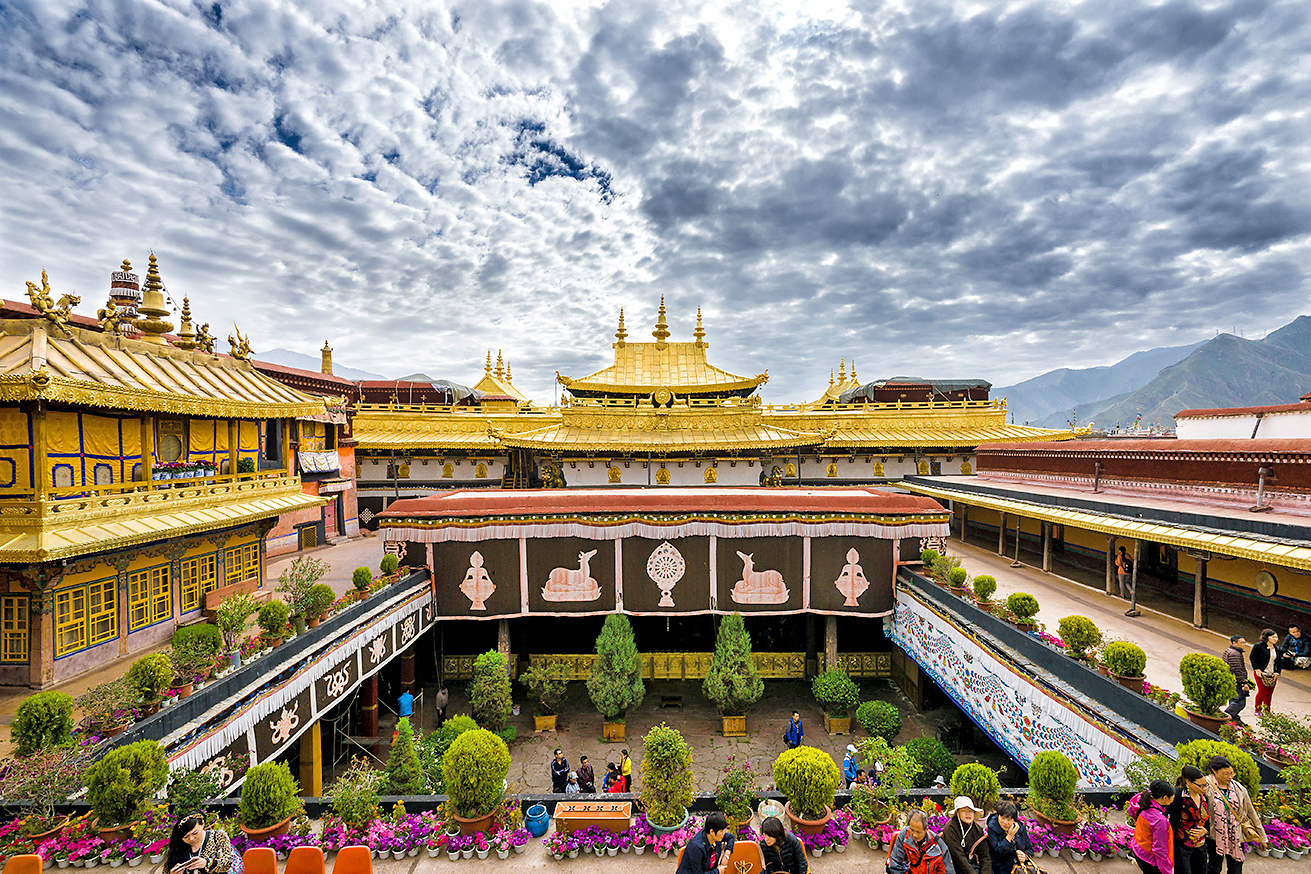
Top Experiences
Views of Mt Everest
Don’t tell the Nepal Tourism Board, but Tibet has easily the best views of the world’s most famous mountain from its northern base camp. While two-week trekking routes on the Nepal side offer only fleeting glimpses of the peak, in Tibet you can drive on a paved road right up to unobstructed views of Mt Everest’s incredible north face framed in the prayer flags of Rongphu Monastery. Bring a sleeping bag, some headache tablets and a prayer for clear skies.
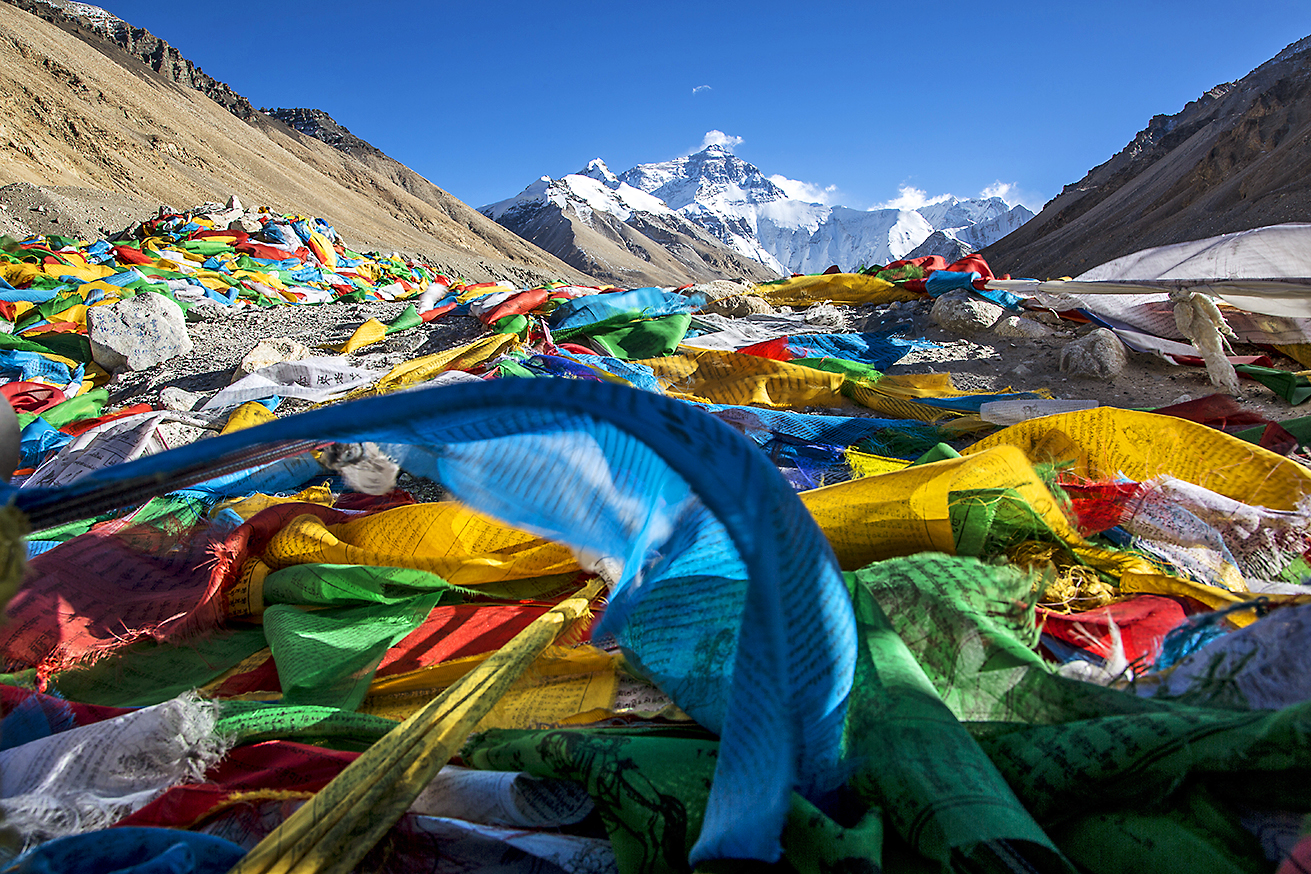
Top Experiences
Samye Monastery
Tibet’s first monastery is a heavily symbolic collection of chapels, chörtens and shrines arranged around a medieval Tibetan-, Chinese- and Indian-style temple. The 1200-year-old site is where Guru Rinpoche battled demons to introduce Buddhism to Tibet and where the future course of Tibetan Buddhism was sealed in a great debate. The dreamy location on the desert-like banks of the Yarlung Tsangpo is just superb and there are some fine hiking excursions nearby. It’s also the end point of Tibet’s most popular trekking route.

Top Experiences
Train Ride to Lhasa
For all its faults, China’s railway to Tibet (the world’s highest) is an engineering wonder and a delightful way to reach the holy city. Pull up a window seat to view huge salt lakes, plains dotted with yaks and herders’ tents, and hundreds of miles of desolate nothing, as you inch slowly up onto the high plateau. Peaking at 5072m may send you diving for the piped oxygen, but it’s still a classic rail trip. Train-travel addicts can now extend the journey by taking the side spur to Shigatse.
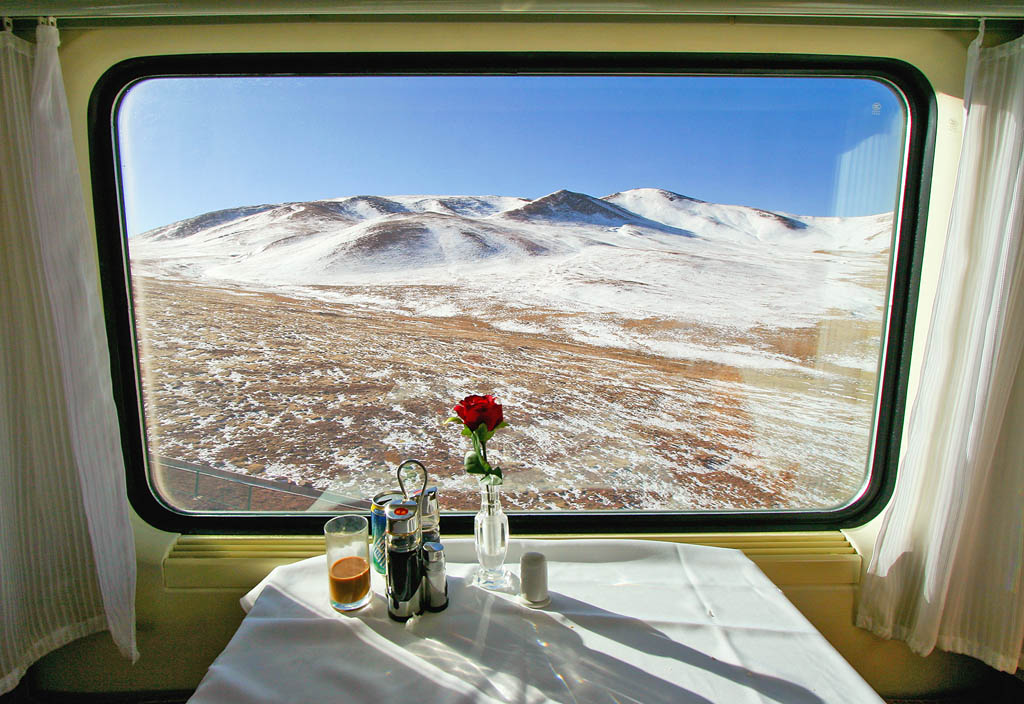
Top Experiences
Drepung & Sera Monasteries, Lhasa
Lhasa’s institutions of Sera and Drepung are more than monasteries – they are self-contained towns. A web of alleyways climbs past medieval kitchens, printing presses and colleges to reach giant prayer halls full of chanting, tea-sipping, red-robed monks. Don’t miss the afternoon debating, a sport of Buddhist dialectics and hand slapping. Best of all, both monasteries are encircled by pilgrim paths that offer fine views, Buddhist rock paintings and plenty of pilgrims.
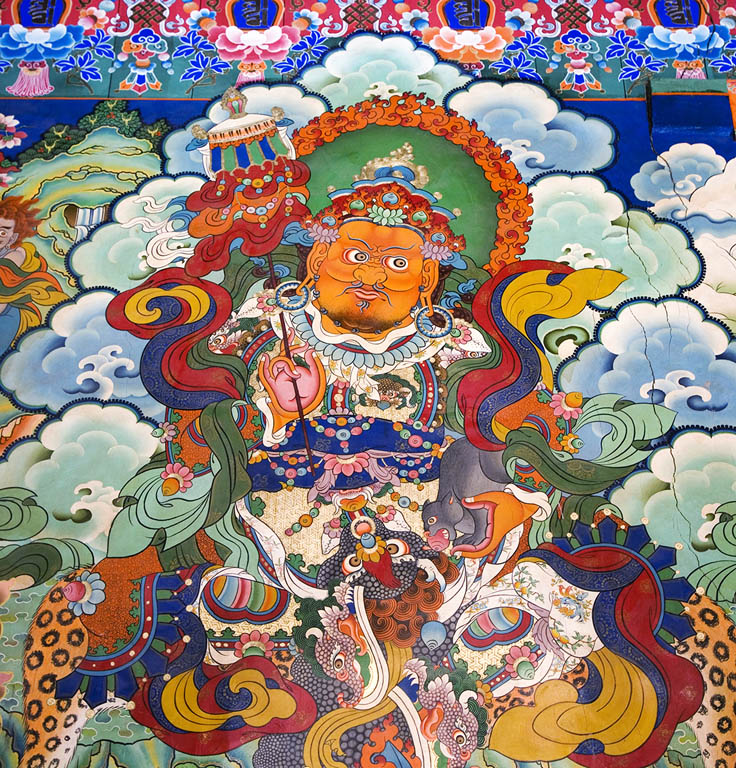
Top Experiences
Saga Dawa Festival
The line between tourist and pilgrim can be a fine one in Tibet, and never more so than during the Saga Dawa Festival, when thousands of pilgrims pour into Lhasa to visit the city and make a ritual procession around the 8km Lingkhor path. Load up on small bills and juniper incense before joining the pilgrims past chapels and prostration points, or travel west to Mt Kailash for the mountain’s biggest annual party. There are also monastery festivals around this time in Tsurphu and Gyantse.
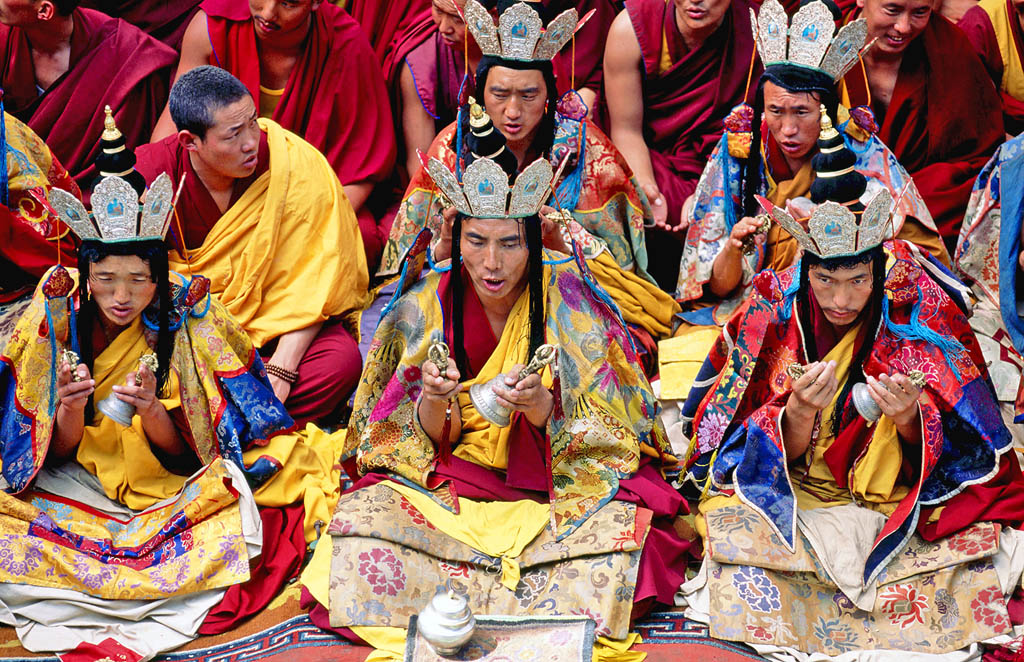
Top Experiences
Guge Kingdom, Ngari
The spectacular lost kingdom of Guge at Tsaparang is quite unlike anything you’ll see in central Tibet; it feels more like Ladakh than Lhasa. As you are lowering yourself down a hidden sandstone staircase or crawling through an interconnected cave complex, there’s a moment when you can’t help but stop and think: ‘This is incredible!’ What’s really amazing is that you’ll likely have the half-forgotten ruins to yourself. Rank this as one of Asia’s great travel secrets.
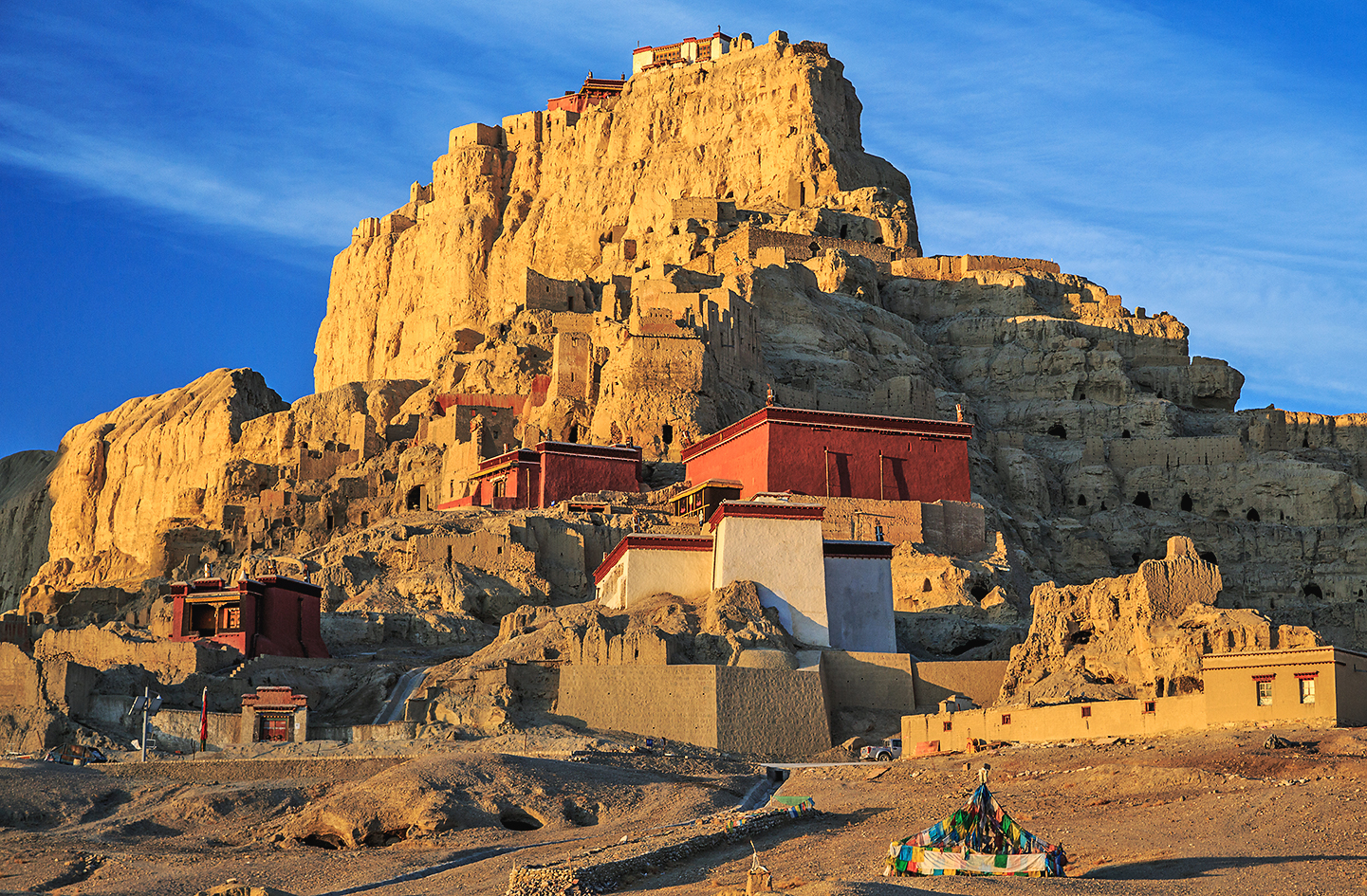
Top Experiences
Ganden Monastery
A 90-minute drive from Lhasa takes you to the stunning location of Ganden, set in a natural bowl high above the braided Kyi-chu Valley. Brought back to life after nearly total destruction during the Cultural Revolution, the collection of restored chapels centres on the tomb of Tsongkhapa (the 14th-century founder of the important Gelugpa school), and boasts two delightful kora paths that offer fabulous views and will soon have you breathing hard from the altitude. If you only make one excursion from Lhasa, let it be to Ganden.
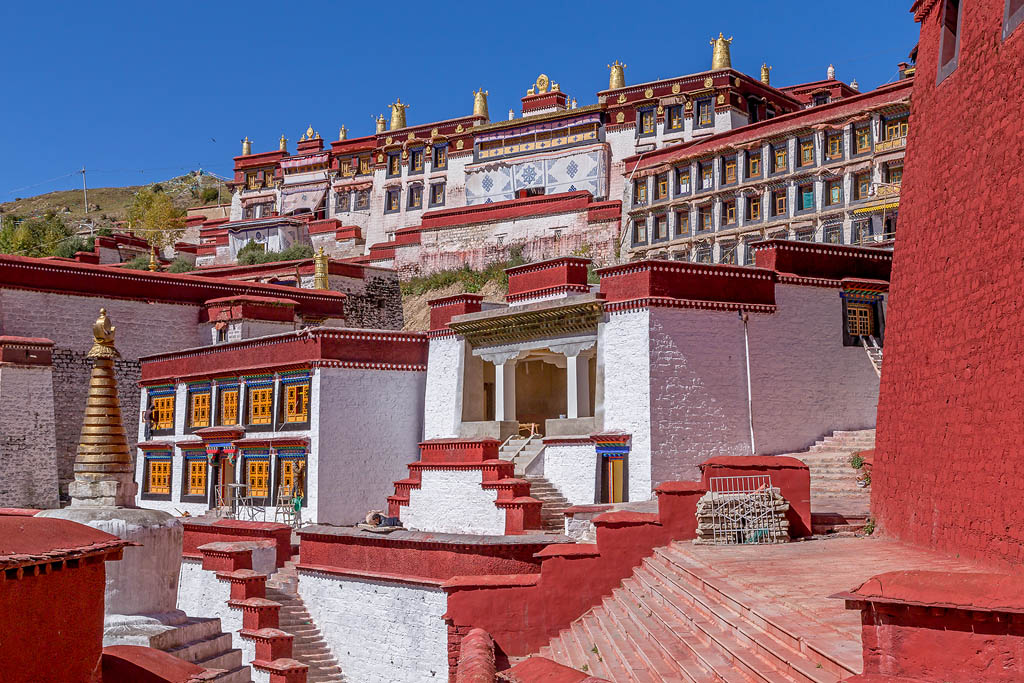
Top Experiences
Ganden–Samye Trek
Tibet is one of those places you really should experience away from the tour-group circuit, at the pace of one foot in front of the other. This classic four-day trek between two of Tibet’s most important monasteries takes you past herders’ camps, high alpine lakes and a Guru Rinpoche hermitage, as well as over two 5000m-plus passes. Hire a horse or yaks for a wonderful wilderness trek, with just the marmots for company. May to October are the best months.
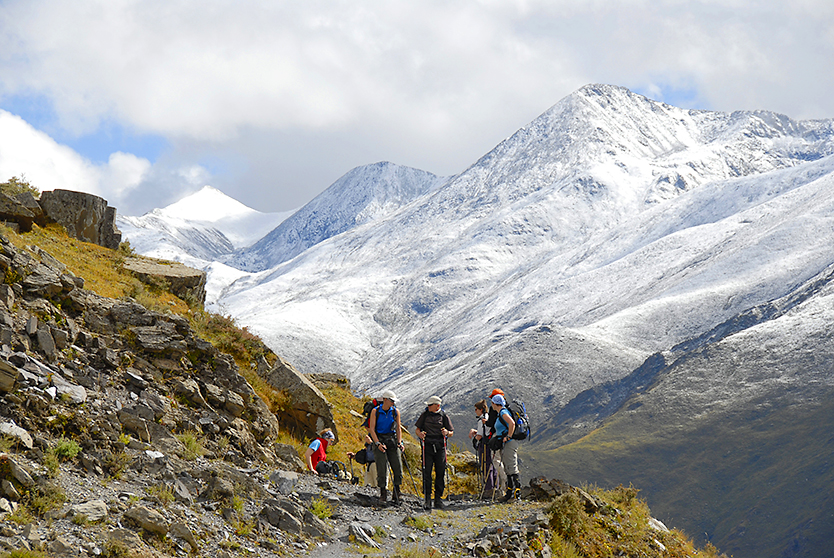
Top Experiences
Nam-tso
Just a few hours north of Lhasa, spectacular Nam-tso epitomises the dramatic but harsh scenery of northern Tibet. This deep blue salt lake is fringed by prayer-flag-draped hills, craggy cliffs and nesting migratory birds, all framed by a horizon of snow-capped 7000m peaks. Walking the kora path at dusk with a band of pilgrims is superb. It’s cold, increasingly developed and devastatingly beautiful. To see the lake at its best, try to minimise your time in the ugly and poorly planned accommodation centre.
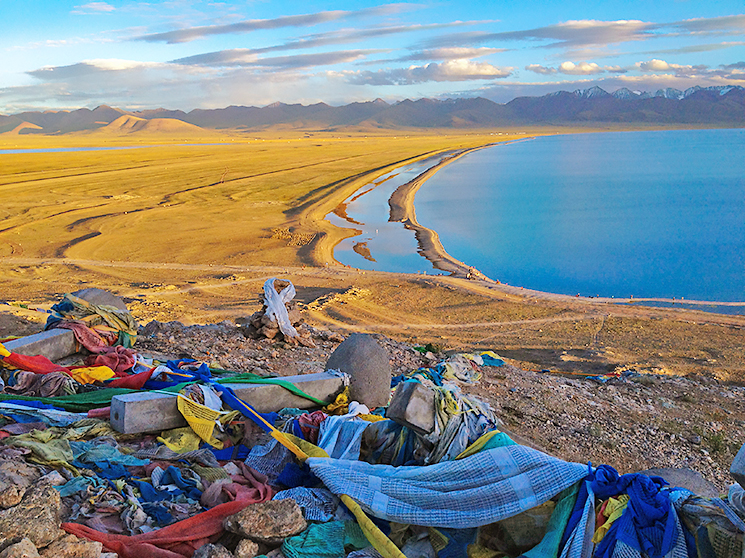
Top Experiences
Gyantse Kumbum
The giant chörten at Gyantse ranks as one of Tibet’s great artistic treasures and is unique in the Himalayas. As you spiral around and up the snail-shell-shaped building, you pass dozens of dim alcoves full of serene painted buddhas and bloodthirsty Tantric demons. It’s an unrivalled collection of early Tibetan art. Finally, you pop out onto the golden eaves, underneath all-seeing eyes, for fabulous views of Gyantse fort and old town. An added bonus is the attached monastery complex.
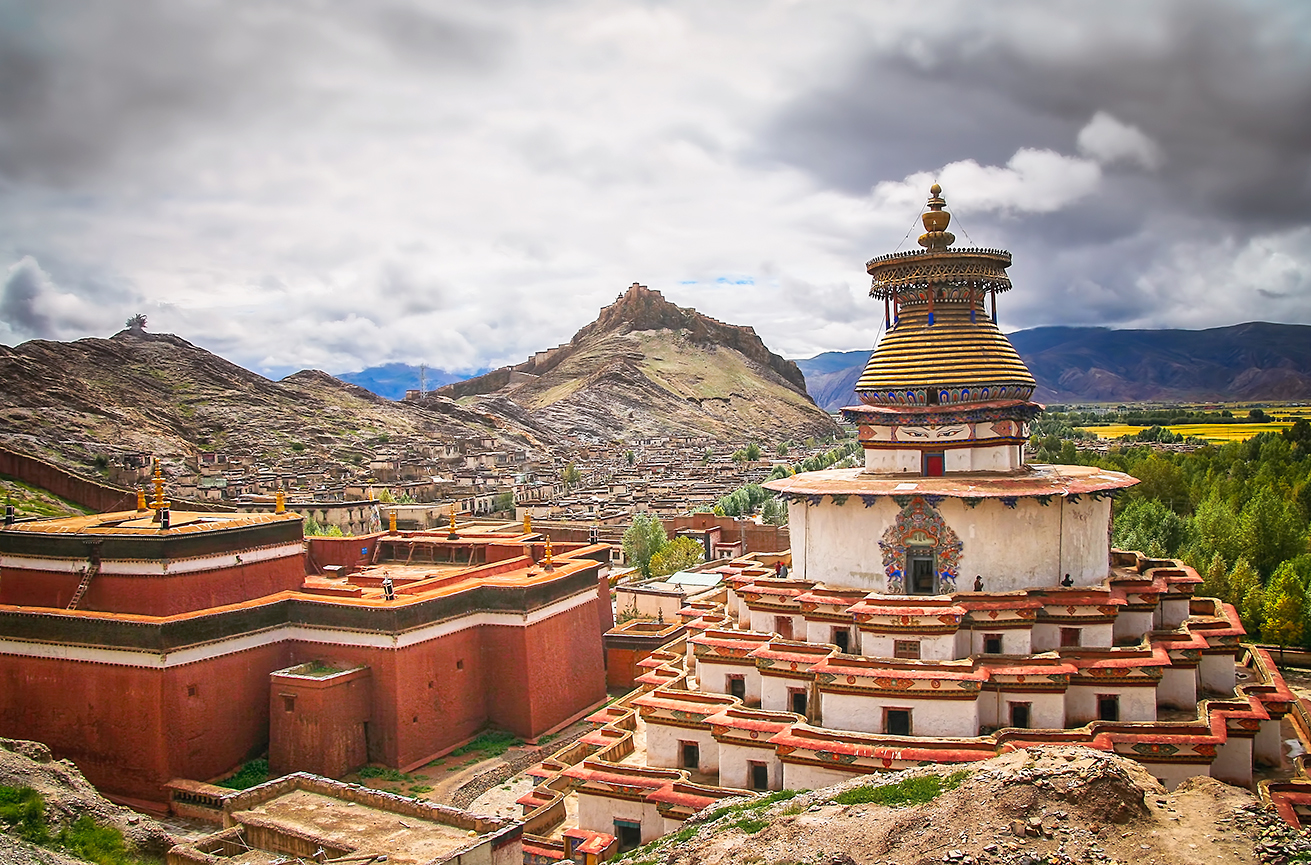
Top Experiences
Adding Your Prayer Flags to a High Pass
Crossing a pass to view a horizon of Himalayan peaks is an almost daily experience in Tibet. Join your driver in crying a breathless ‘so, so, so’ and throwing squares of paper into the air like good-luck confetti, as the prayer flags flap and crackle in the wind. Better still, add your own to a pass’s collection for some super-good karma. Our suggestions: try the Khamba-la overlooking Yamdrok-tso, or the Gyatso-la, near Lhatse and the highest pass on the Friendship Hwy.
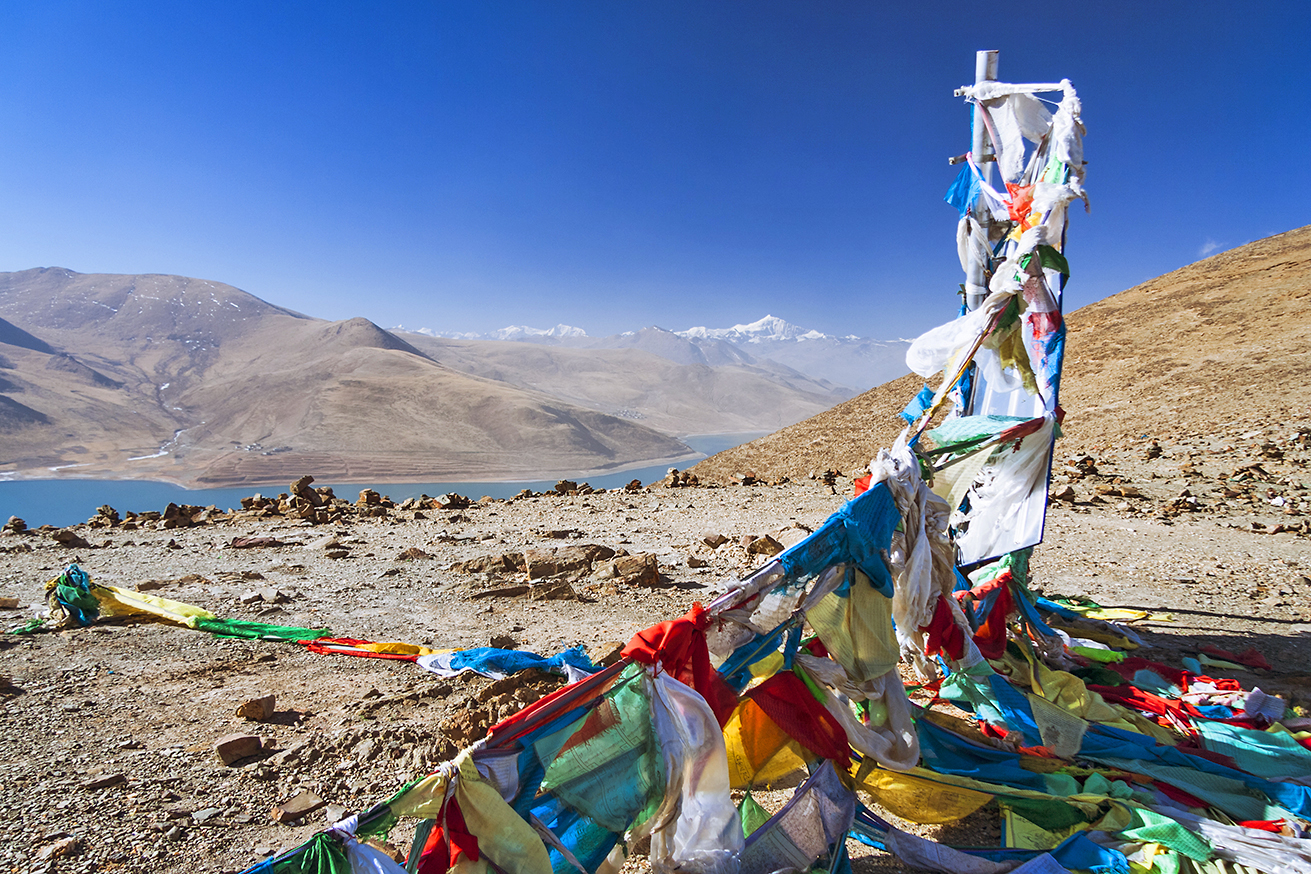
Top Experiences
Koras & Pilgrims
All over Tibet you’ll see wizened elderly pilgrims twirling prayer wheels, rubbing sacred rocks and walking around temples, monasteries and sometimes even entire mountains. It’s a fantastic fusion of the spiritual and the physical, and there are few better ways of spending an hour than joining a merry band of pilgrims on a monastery kora. En route you’ll pass rock paintings and sacred spots, and you’ll probably be invited to an impromptu picnic. Our favourite? Shigatse’s Tashilhunpo Kora.
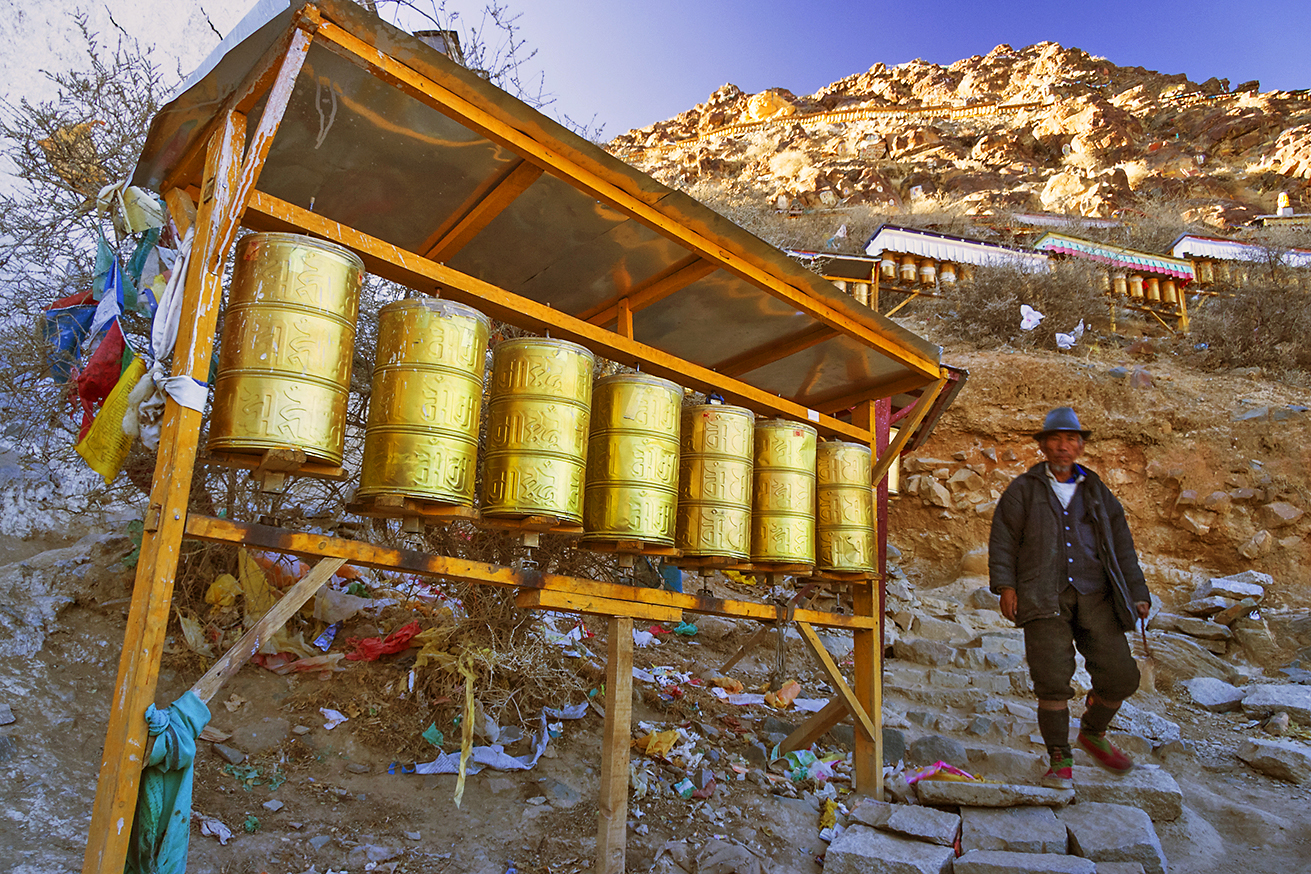
Top Experiences
Friendship Highway: Lhasa to Kathmandu
A 4WD trip across Tibet is the quintessential travel experience. You’ll have to overcome the permit system and brave terrible toilets, but the rewards are ample: stunning vistas such as those around Yamdrok-tso, little-visited monasteries, a sense of journey and a giant slice of adventure. At the end of the trip you drop off the plateau through alpine forests into the oxygen-rich and curry-scented valleys bordering Nepal. Figure on at least a week; the hard-core can cycle the route.

Top Experiences
Sakya Monastery
A 25km detour off the main Friendship Hwy takes you to this brooding, massive, grey-walled fortress-like building. In a land of magnificent monasteries, Sakya’s main prayer halls are among the most impressive, lined with towering buddhas, tree-trunk-sized pillars, sacred relics, a three-storey library that ranks as Tibet’s finest, and a fine kora path. Pilgrims come here from across western Tibet, adding to the colour and charm. Give yourself most of the day to explore monastery complexes on both sides of the river.
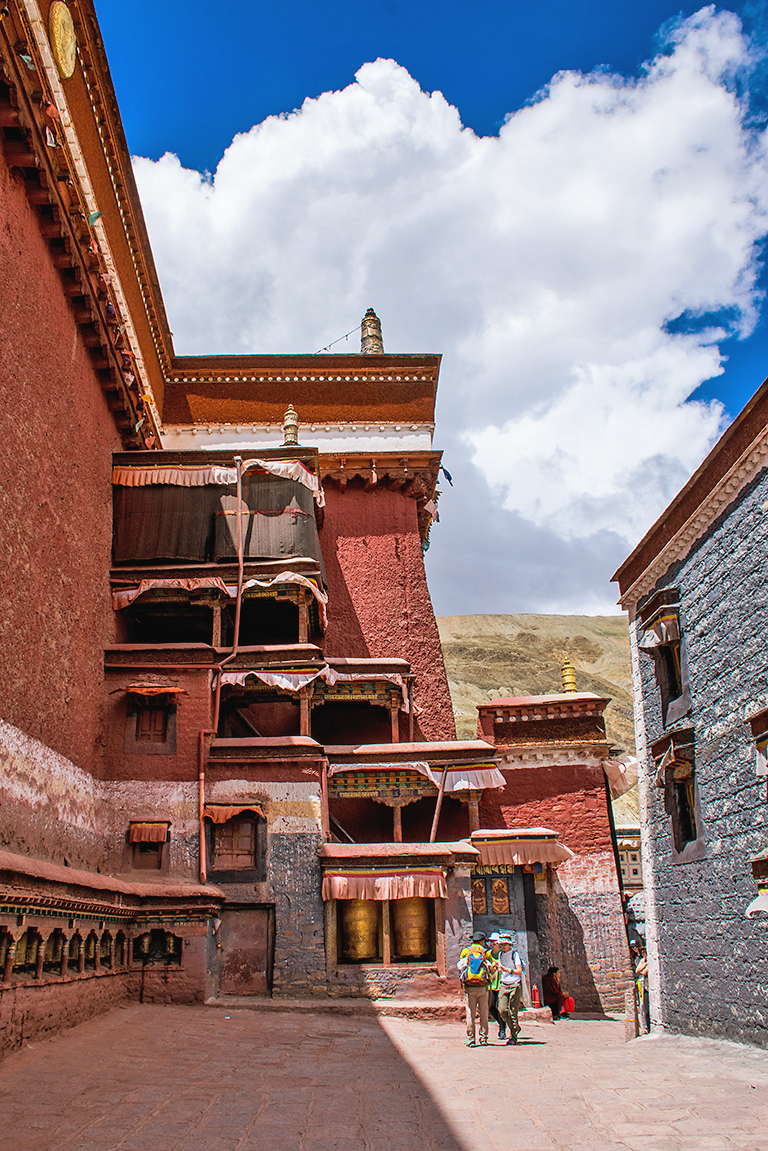
Top Experiences
Peiku-tso & Shishapangma
Tibet is not short on spectacular, remote, turquoise-blue lakes. Of these, none boasts a grander backdrop than little-visited Peiku-tso near Tibet’s southern border with Nepal. Rising south of the huge lake is a wall of glaciers and Himalayan peaks crowned by 8027m giant Shishapangma, the tallest mountain wholly inside Tibet. The lake makes a great picnic or camping spot en route to western Tibet or to the new border crossing with Nepal’s Langtang region at Kyirong. Tibet doesn’t get wilder or more scenic than this hidden corner.
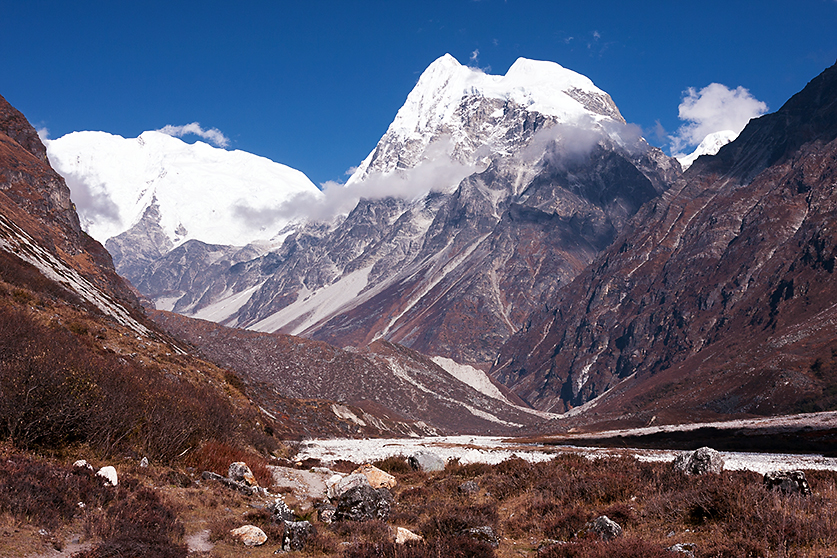
Top Experiences
Rawok-tso Lakes
In a land of spectacularly remote, turquoise lakes, none surpasses the crystal-clear waters, sandy beaches and snowcapped peaks of Rawok-tso and nearby Ngan-tso, way out in eastern Tibet, and more reminiscent of the Canadian Rockies than anything on the high plateau. Stay overnight at a hotel on stilts above the lake and explore the nearby Mikdo Glacier during the day. Even better, continue east on the wild overland route from Tibet through the river gorges of Kham to northwestern Yúnnán. Welcome to a completely different kind of Tibet.
